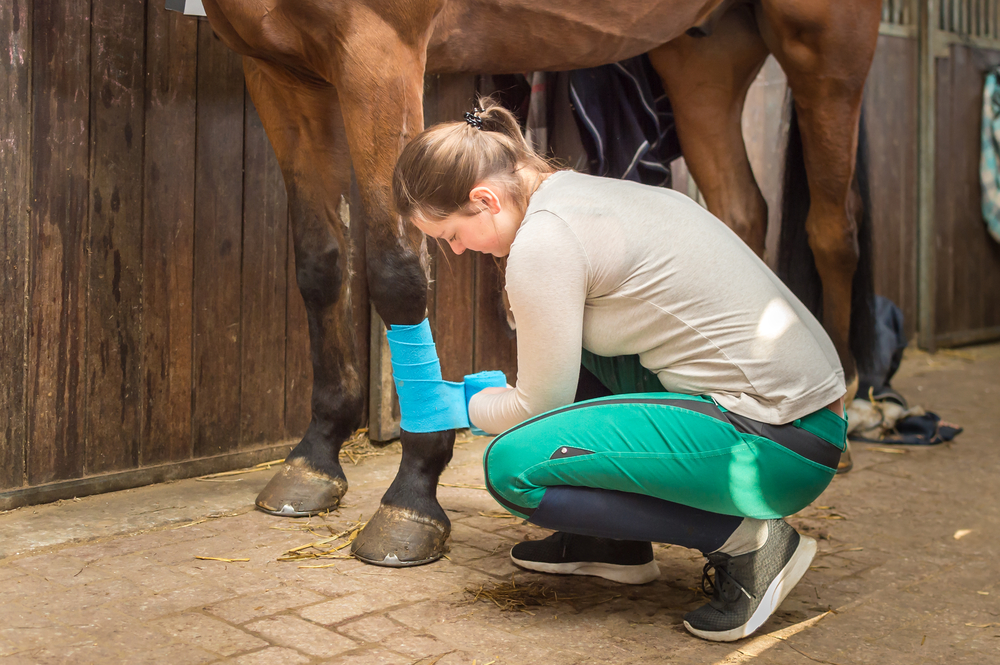Just like us humans, horses are sometimes in need of basic first aid. Unlike us however, a horse is a large, stocky animal that is unable to tell you where it hurts. More often than not, you will need to consult a vet about issues your horse may have, which could lead them to visit your stable or simply give advice over the phone.
Either way, it is important to have some basic knowledge of what equipment to have readily available and how to deal with some of the more standard elements of first aid, even if it is in preparation of a vet coming to visit.

There are some items that you should always try to keep stocked in your first aid kit. Ensure that you have a kit easily accessible at your stable, in your car if you keep your horse in a field off-site and keep it with you when you travel to events.
Click here for a wide range of further essentials that we can provide for your first aid kit.
The most likely injury that you will need to deal with when it comes to your horse will be simple cuts and scrapes that have occurred through riding or from being overly curious in their paddock or field space. If there appears to be bleeding that will not stop, apply pressure to the wound and contact your vet straight away. This will usually be the case if the wound is more than skin deep and longer than a few centimetres. Also contact your vet if there is an injury around the eyes or joints as these will need to be checked professionally.
If the cut is fairly small and not bleeding too badly, apply pressure until it stops and use swabs to clean the area. Use a bandage from your first aid kit, wrapping it around a wad of padding. Ensure that there are no wrinkles and that it is not too tight. If the area looks like it is swelling, before you cover the area try to introduce a stream of cold water which can help to reduce inflammation.
Even when your horse does not have an injury that needs attending too, it is important to conduct regular health checks to ensure that they are healthy in other ways.
https://www.bluecross.org.uk/pet-advice/basic-first-aid-horses